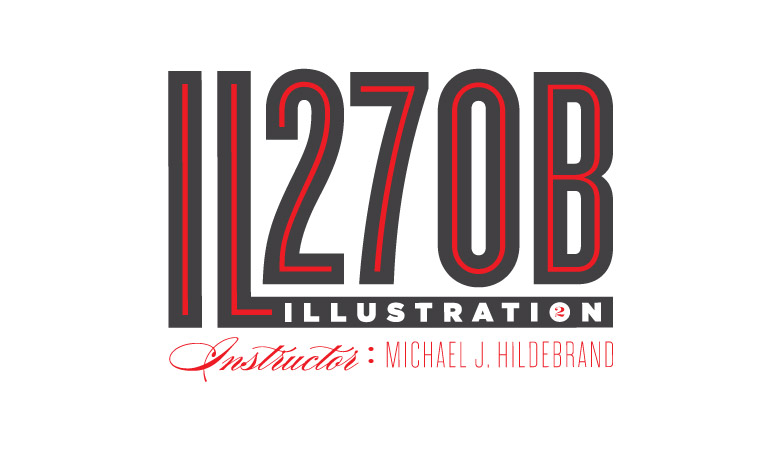A term meaning “Living Picture,” the Tableau Vivant was a popular form of entertainment
in Europe before photography, radio, or film. A group of models would recreate paintings,
etchings, or scenes from books by posing in frozen attitudes on a stage, often with elaborate
costumes, props, and lighting. Tableaux Vivants are still created at the annual Pageant of the
Masters in Laguna Beach – a $4.1 million production featuring 40 art works recreated over a
period of 2 months. For this assignment, you will create a Tableau of one work of figurative
art, and use it as reference for a new illustration. The illustration will be 11”x15”.
OBJECTIVES
To explore existing artistic traditions and history as a source of inspiration, to examine the
role of image reference, both historical and created, in creating an illustration, to develop
an immersive composition from a static one, to use warm and cool contrast in a painting.
PROCEDURE
Chose one of the artistic traditions listed below:
Chinese Scrolls
European Illuminated Manuscripts
Egyptian Painting
Greek Vase Painting
Persian Miniature Painting
Ukiyo-e Prints
Research the tradition, and find an example of it that you would like to base your piece on.
You must have a high quality copy of this image, at least 3”x3”. The image may be Xeroxed
or scanned from a book. A low-res JPEG is not acceptable. Put the copy in your
sketchbook. Record the name and period of the piece, and, if appropriate, the artist. Write
about what is occurring in the image. Identify all the characters, the environment, and any
significant objects in the image.
PHOTO-REFERENCE:
Using friends or classmates, re-enact the scene from your image.
You may want to arrange equivalents of the costumes, props, and setting, for instance,
using a broom handle for a sword. Pay attention to the lightning of your tableau. When
you are satisfied with your tableau, photograph it. The artistic traditions listed above tend
towards flattened, theatrical compositions. Work against this in your photo-reference.
Strive to find the point of view that will create the most interesting composition. Consider
the depth of your arrangement: background, middle ground, and foreground. Present
your photos in class.
DRAWING:
Based on the feedback you receive in class on your photographed
compositions, develop your drawing at the size of the final illustration. Determine each
figure on separate layers of tracing paper, as well as the background, and any major props.
Manipulate the layers of tracing paper around to tweak your drawing. When you are
satisfied with the composition, transfer it to illustration board. You may determine if your
tableau will be in modern or historical dress.PAINTING: Execute the painting as a warm and cool value scheme. Use Titanium White,
Burnt Umber, and Ultramarine Blue acrylic paints. By mixing the blue and umber paints,
you will create a dark near-black color. Adjusting it with a little more blue or brown will
make it cooler or warmer, respectively. Adding white will provide you with full range of
warm and cool values.
PRESENTATION:
When the painting is finished, mat it. The mat should have a second
window for a good, clean copy of the source image. Flap the matte with a sheet of tracing
paper and a sheet of cover stock.
1/18
Project 1: Tableau Vivant assigned
In Class: Research Tableau Vivant source material
1/20
In Class: Exercise 2: B&W Texture Matching Scavenger Hunt
1/25
Project 1: Tableau Vivant research and photos due
In Class: Begin drawing.
1/27
In Class: Exercise 2: Expression studies
2/1
Project 1: Tableau Vivant drawing due.
In Class: Paint Tableau Vivant
2/3
In Class: Paint Tableau Vivant
2/8
Project 1: Tableau Vivant critiqued.
2/10
In Class: Exercise 3: Color Texture Matching Scavenger Hunt
2/15
Project 1: Tableau Vivant finished.
Project 2: Periodic Table element chosen.
2/17
Project 2: Work on Periodic Table thumbnails / finish Tableau Vivant Painting
2/22
Project 1: Tableau Vivant Painting due, matted, flapped, labeled.
Project 2: Periodic Table thumbnails and written research due.
